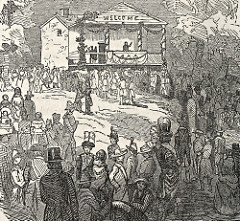There is a sleep disorder that affects between seven to ten percent of teenagers called Delayed Sleep Phase Disorder, also known as DNS. Most teenagers outgrow this disorder by the time they reach young adulthood. Less then one percent of adults are believed to have DSP. Often people mistake this sleep disorder for insomnia.
Left on their own, people with delayed sleep phase disorder would stay up until very late, sometimes until 4 or 5 a.m. They like to get up very late in the morning or early afternoon. Often they are referred to as night owls.
Many teenagers like to stay up late and sleep late in the morning. Sometimes this is because they want to socialize at that time of the day. However, it can also be due to the natural delay in the circadian sleep / wake rhythm at their age of development.
Teenagers with this sleep disorder often have a very hard time getting up in the morning for school. Even if they go to sleep at a regular time, such as 11 p.m., they toss and turn for hours like someone with insomnia. They difference is, unlike an insomniac, people with delayed sleep phases disorder have no difficulty staying asleep. They do have a very difficult time getting up early in the morning. Teenagers with this sleeps disorder are very tired during the day and may even fall asleep in the classroom. The exact cause of this sleep disorder is not known. It is known for certain that it is a circadian rhythm problem.
Treatment for this sleep disorders is available for people that need to get onto a more traditional sleep / wake schedule. The types of treatment include, bright light, chronotherapy, melatonin and over- the-counter prescribed sleeping pills.
Bright light treatment for delayed sleeps phase disorder uses bright light to trick the brain’s circadian clock . Exposure to bright light shifts the circadian rhythm if it is administered within a few hours of the body’s lowest temperature at night.
Using chronotherapy as a treatment for someone with delayed sleep phases disorder requires a block of time one week long. Each day bedtime is delayed by three hours successively. For example, for someone that falls asleep at 2 a.m. but wants to fall asleep at 11. p.m., their bedtime would move to 5 a.m. on the first day. The next day it would move to 8 a.m. and continue this cycle for a week. A teenager suffering with delayed sleeps phase disorder would need a week off from school in order to complete this therapy. Once the desired bed time is reached it is very important to keep a consistent wake up time.
There are several treatments involving various drugs that are used to treat delayed sleep phase disorder. Melatonin has been successful in changing the sleep cycle of people with this sleep disorders. Prescription medication such as Ramelteon, and other sleeping pills, have been successful in treating teenagers and adults with delayed sleep phase disorders.
If your teenager has trouble falling asleep and always wants to stay up late, be aware of the possibility that a sleep disorder may be present.
Jayden Briggs writes about Sleeping Disorders, Affordable Health Care and other health topics.

